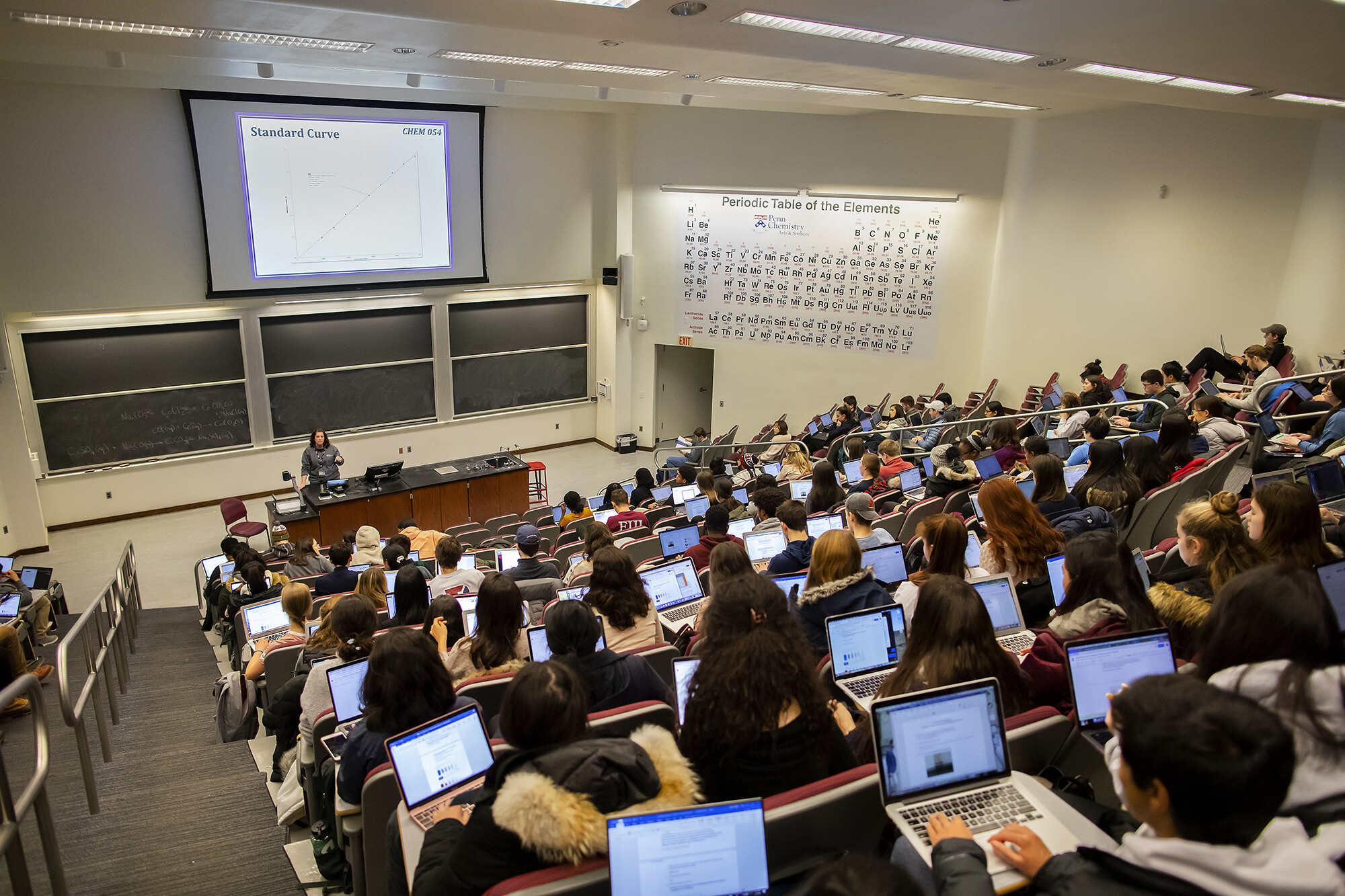
(From left) Doctoral student Hannah Yamagata, research assistant professor Kushol Gupta, and postdoctoral fellow Marshall Padilla holding 3D-printed models of nanoparticles.
(Image: Bella Ciervo)

The creation of the periodic table by Russian chemist Dmitrii Ivanovich Mendeleev was, in many ways, an accidental triumph. Faced with publication deadlines for a chemistry textbook while looking for better ways to teach his students, he chose to display the 63 known elements in a tabular format.
Mendeleev knew that elements with similar atomic weights tended to behave like one another, so he structured the table with this in mind. While putting together the first draft for his publisher, he noticed gaps in his creation. Instead of disregarding his design as incomplete or inaccurate, he hypothesized that these gaps represented elements that hadn’t yet been discovered.
Within Mendeleev’s own lifetime, three of those blank spaces were filled by new elements. Not only did these discoveries provide support for his hypothesis, they also laid the groundwork for the next 150 years of research that filled in the remaining gaps of the periodic table. Oganesson, the most recent addition, was listed as element No. 118 in 2015.
The U.N. proclaimed 2019 as the International Year of the Periodic Table. And while many might only picture the periodic table as an image on the wall of a chemistry classroom, the periodic table is a dynamic and essential learning tool for students across a number of STEM fields.
“The periodic table is definitely alive and well,” says Judith Currano, who has been working as the head of Penn’s Chemistry Library for almost 20 years, and teaches the graduate-level chemistry information course. “It’s an amazing thing, and amazing that it was developed 150 years ago.”
For a dynamic view of the periodic table, Currano recommends the Royal Society of Chemistry’s Visual Elements version. Clicking on an element reveals a wide array of chemical information, from details on its atomic structure to the date it was discovered. There are even podcasts and videos available for a number of elements.
But even a plain version of the periodic table contains a wealth of information. “The periodic table is all about trends and behaviors,” Currano says. “It also allows us to make predictions based on what we know about elements that are in the same family.”
One way to illustrate how the periodic table can be used to predict chemical behaviors is with one of the many “mock” versions of Mendeleev’s creation: The Periodic Table of Desserts.
The “elements” that sit together in the far right-hand column (butter, milk, cream, shortening, etc.) share common properties that make them behave similarly. Someone who is interested in making a cake but who is also lactose-intolerant could predict that using vegetable shortening instead of butter would produce a similar result. The baker could then test (and taste) to see whether the prediction holds true.
The periodic table is such a fundamental component of chemistry that it’s not usually given much of a formal introduction in the classroom. “A lot of the basics of the periodic table, like talking about atomic structure and explaining what an element is, begins with a student’s very first chemistry class,” says Jenine Maeyer, who has led the general chemistry laboratory lectures since 2009 after receiving her Ph.D. in chemistry education.
More than 500 students from a range of majors outside of chemistry, including biology, nursing, medicine, engineering, and physics, take Chemistry 101 each semester. This course, along with its separate laboratory component, is meant to provide a general survey of chemistry, but is expanded from what students would have seen in their high school’s AP curriculum.
Maeyer says that because the periodic table is so fundamental, it’s hard to picture a chemistry classroom without it. “It’s always there,” says Maeyer. “It’s a huge looming poster that hangs in the lecture hall and that is posted in all of the labs. It’s the first thing you see when you open the textbook. And I would say that students probably reference it at least once during every class period.”
After their first-year general-survey course, most chemistry students will shift their focus to studying complex molecules and chemical reactions instead of looking at individual elements in great detail. But, regardless of whether they go on to specialize in organic, inorganic, physical, or biochemistry, students can’t reach these more advanced levels of chemistry without understanding the periodic table as the foundation of the chemical world.
The same is true for graduate students and faculty, too, Currano says. “I’ve gone to defense seminars and symposia at conferences where people pull up a periodic table and show where an element that they are focusing on sits on the table to show how it behaves,” she says.
Even a century and a half later, Mendeleev’s accidental triumph remains relevant to what is known about the chemical world today, and what researchers might still learn in the future. “There’s always something that they can learn from the periodic table, and it’s definitely always a tool that they will have in their toolbox,” Maeyer says.
Erica K. Brockmeier

(From left) Doctoral student Hannah Yamagata, research assistant professor Kushol Gupta, and postdoctoral fellow Marshall Padilla holding 3D-printed models of nanoparticles.
(Image: Bella Ciervo)

Jin Liu, Penn’s newest economics faculty member, specializes in international trade.
nocred

nocred

nocred